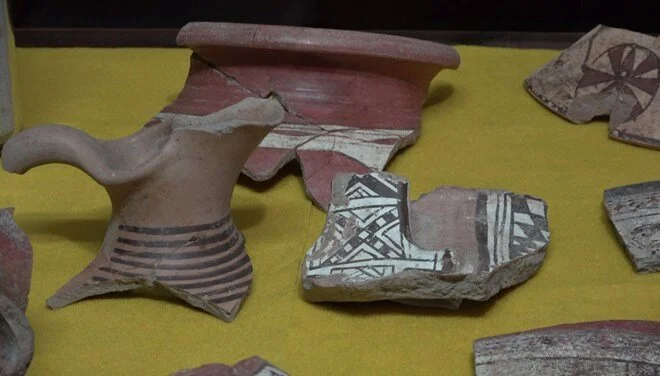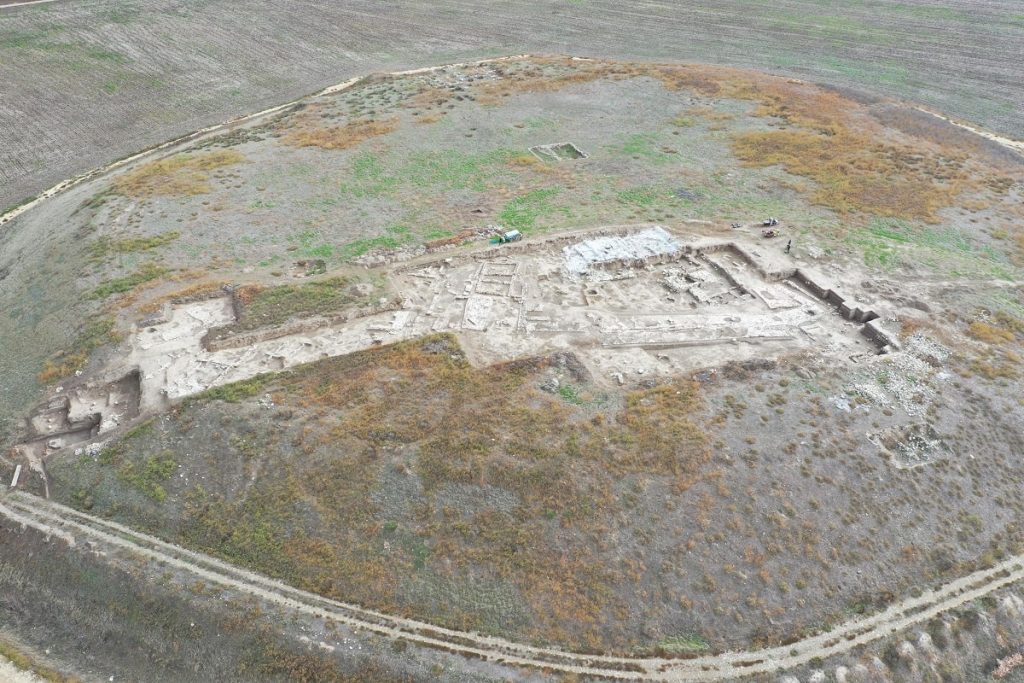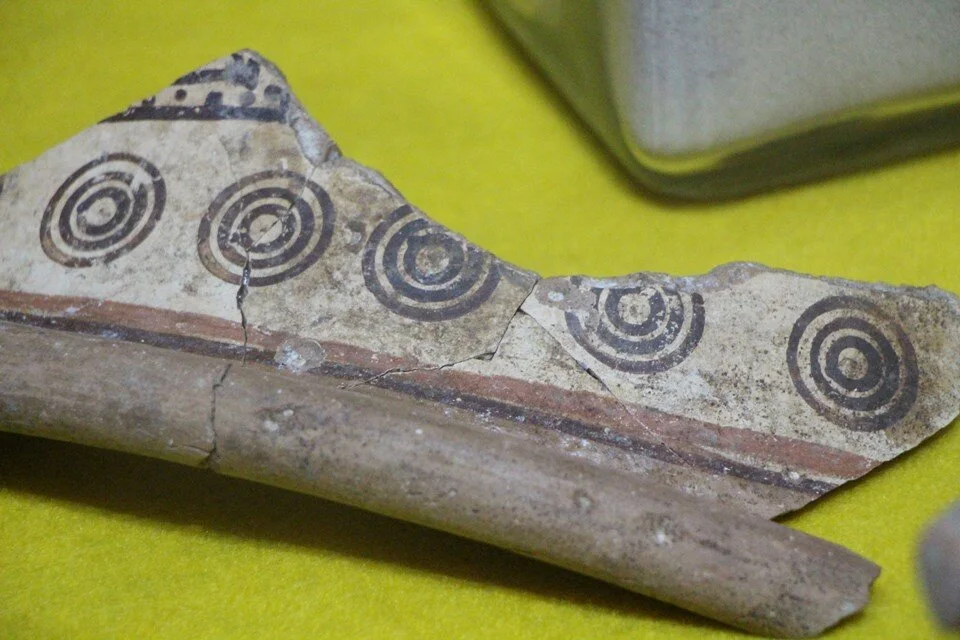
The largest Iron Age painted pottery collection of Anatolia was unearthed at Oluz Mound
In Oluz Mound where evidence of the belief in Zoroastrianism, the earliest example of monotheistic belief in the Ancient Near East, has been found, the largest collection of Iron Age painted and decorated pottery in Anatolia has been reached.
Oluz Mound was discovered by Prof. Dr. Şevket Dönmez from Istanbul University between 1997 and 1999. Excavations have been ongoing in the region under the leadership of Prof. Dr. Şevket Dönmez since 2007. The significance of the mound, which yields different findings each year, is substantial in terms of Anatolian history.
Oluz Mound is located 2 km northwest of Gözlek Village and approximately 5 km east of Toklucak (formerly Oluz) Village. It is situated about 3 km south of the Amasya-Çorum highway.
The collection, which includes unique pottery fragments with lion figures, is evaluated as the largest painted and decorated pottery collection in Anatolia, featuring pieces that are unparalleled in their kind.

Following the discovery of large pottery fragments, including lion figures, in a fire temple from the Persian period, excavation director Prof. Dr. Şevket Dönmez, a faculty member of Istanbul University’s Department of Archaeology, stated that these fragments were taken for examination to the excavation house. He mentioned, “There’s nothing similar to the lions of Oluz Mound. Over 2,000 painted and decorated pottery fragments found during the 17 years of excavation are highly valuable in terms of Anatolian Iron Age and pottery craftsmanship. I believe that these findings haven’t been encountered in any excavation until today.”

Prof. Dr. Dönmez explained that they have assessed that painted and decorated pottery production took place at Oluz Mound between around 1200 BC and the 300s BC. He stated, “When the Persians came to Anatolia, they liked to use the lion figure. The strength and power of the lion have always appealed to the Persians. However, the Persians didn’t have a strong tradition of pottery making. But when they came to Anatolia, they also began to manage pottery workshops. They started shaping things according to their own preferences.”
You may also like
- A 1700-year-old statue of Pan unearthed during the excavations at Polyeuktos in İstanbul
- The granary was found in the ancient city of Sebaste, founded by the first Roman emperor Augustus
- Donalar Kale Kapı Rock Tomb or Donalar Rock Tomb
- Theater emerges as works continue in ancient city of Perinthos
- Urartian King Argishti’s bronze shield revealed the name of an unknown country
- The religious center of Lycia, the ancient city of Letoon
- Who were the Luwians?
- A new study brings a fresh perspective on the Anatolian origin of the Indo-European languages
- Perhaps the oldest thermal treatment center in the world, which has been in continuous use for 2000 years -Basilica Therma Roman Bath or King’s Daughter-
- The largest synagogue of the ancient world, located in the ancient city of Sardis, is being restored











Leave a Reply